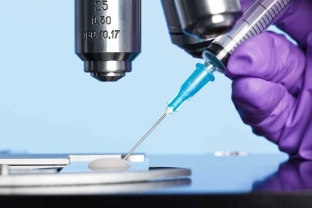Infertile marriage is considered one of the most important problems of the 21st century. It is customary to call such a marriage a year of normal sexual life, in which, without the use of any methods of contraception, pregnancy does not occur. The number of families who want, but are not able to give birth to a child, reaches 15% worldwide. A huge mistake in diagnosing an infertile family is considered to be the primary appointment of a whole range of examinations for a woman, although male infertility accounts for about 50% of infertile marriages, and studying the quality of a man's ejaculate and the condition of his vas deferens is a much simpler and more affordable procedure. That is why a practicing urologist needs to know the causes of infertility in men and how to eliminate them.
Etiology of male infertility: classification of the main causes
There are a huge number of conditions that can cause reproductive dysfunction in men. All of them can be divided into three main groups:
- endocrinological, immunological and neuropsychiatric disorders, congenital pathology of sexual differentiation;
- diseases of the male genital organs that negatively affect spermatogenesis and the process of ejaculate secretion;
- relative infertility, when no organic pathology of the vas deferens is detected.
The following classification of the causes of male infertility is widely popular in the world, in which all of them are divided into 5 main forms:
- secretory infertility:
- secretory-endocrine (provoked by gonadal insufficiency);
- secretory-toxic (result of exogenous intoxication);
- excretory infertility - developing on the basis of inflammatory or other intoxication of the vas deferens;
- combined infertility - glandular insufficiency in combination with obstructive or toxic causes;
- immunological infertility;
- unclassified forms of infertility.
Key points for diagnosing male infertility
The initial step in the diagnosis of male infertility is a competent history taking. It is necessary to find out whether the patient's infertility is primary or secondary (that is, whether pregnancy occurred from him in the past), how long an active unprotected sexual life does not occur, what injuries and diseases the patient suffered in the past, whether surgical interventions were performed on reproductive organs and so on. The next step is a general examination of the patient and an examination of the genital organs, which must also be carried out carefully to detect objective signs of an inflammatory process or other causes of male infertility. The most important point in the diagnosis of male infertility is the spermogram - a laboratory study of the ejaculate. It is necessary to find out there are or are no active spermatozoa in the ejaculate, determine their number and functional state, examine all the components of the ejaculate, since an insufficient number of them can disrupt the normal conditions for the functioning of spermatozoa. Genitography - X-ray contrast study of the male reproductive system helps to establish the presence of an obstructive process in the vas deferens, which can cause a violation of ejaculate production. The final step in the diagnosis of male infertility is a testicular biopsy, which can be used to determine the state of the hematotesticular barrier of the epithelium of the male gonads.
since an insufficient amount of them can disrupt the normal conditions for the functioning of spermatozoa. Genitography - X-ray contrast study of the male reproductive system helps to establish the presence of an obstructive process in the vas deferens, which can cause a violation of ejaculate production. The final step in the diagnosis of male infertility is a testicular biopsy, which can be used to determine the state of the hematotesticular barrier of the epithelium of the male gonads. since an insufficient amount of them can disrupt the normal conditions for the functioning of spermatozoa. Genitography - X-ray contrast study of the male reproductive system helps to establish the presence of an obstructive process in the vas deferens, which can cause a violation of ejaculate production. The final step in the diagnosis of male infertility is a testicular biopsy, which can be used to determine the state of the hematotesticular barrier of the epithelium of the male gonads.
Conservative and surgical treatment of male infertility
The scheme of therapeutic measures to eliminate male infertility should be drawn up purely individually, taking into account the etiological factors and pathological characteristics of each individual man. Typically, such therapy takes a fairly long period of time, during which the couple continues to try to conceive a child. First of all, it is necessary to eliminate the negative impact of factors such as smoking, alcohol, drug use, occupational hazards, and to stabilize the emotional background of a man. Restorative methods of drug treatment are considered to be the intake of vitamins and herbal remedies, the use of physiotherapy exercises. Medications should be prescribed only after a thorough study of the hormonal mirror of a man. Conservative treatment is aimed primarily at
Surgical treatment is performed in the presence of an obstructive process in the vas deferens. Surgical anastomoses are created to improve the outflow of the ejaculate: vasovasoanastomosis, vasoepididymoanastomosis and vaso-testicular anastomosis. In case of diagnosis of serious damage to the hemato-testicular barrier, in which neither conservative nor surgical treatment is effective, it is recommended to perform artificial insemination using donor ejaculate.>







Add a comment